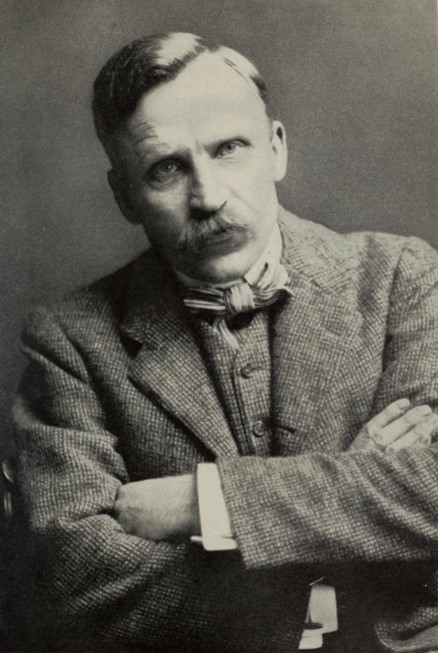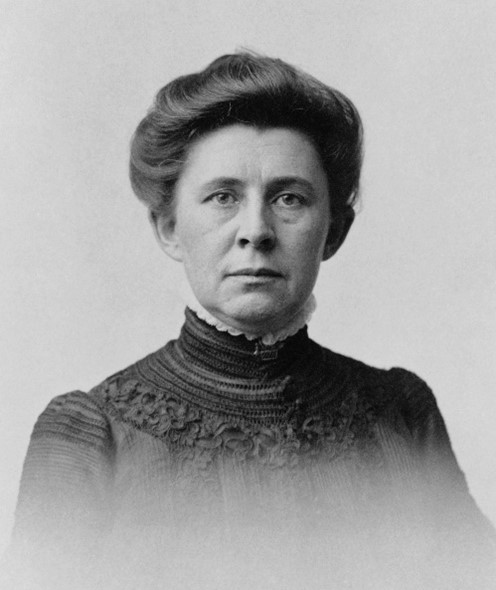It’s 1893, and the United States is in the middle of an economic panic. People are rushing to the banks, eager to take out all their money before it becomes worthless. The national unemployment rate hovers near 18%, and hundreds of companies and banks go out of business. Into this inauspicious moment, a new magazine eager to forge a new idea of American letters prints its first issue. For thirteen years, the irrepressible Samuel S. McClure helmed an enormously talented staff whose work helped bring forth a new era of journalism.
Samuel McClure (the middle name Sidney was added later) was born in Ireland on February 17, 1857. His family became impoverished with the death of his father when he was eight years old. In 1866, the McClures moved to Valparaiso, Indiana, where other relatives had established a small working farm. Samuel eked out an education, eventually earning a bachelor’s degree from Knox College in Galesburg, IL. While he was always interested in journalism, he established himself as an editor rather than as a writer, first working for The Wheelman, a literary magazine dedicated to bicycling. In 1884, he created the McClure Syndicate, the nation’s first newspaper syndicate. A newspaper syndicate seeks manuscripts, articles and serialized novels and pays authors for their work, then places them in news outlets for publication. At the height of his success at the syndicate, his authors included Robert Louis Stevenson, Rudyard Kipling, Thomas Hardy and Arthur Conan Doyle. The venture proved highly successful, broadening the kind of information made readily available throughout the country and bringing a new generation of authors to prominence in the United States.
McClure’s Magazine was founded to maintain more control over placing work for publication. The first issue, published in July 1893, set the template for all future issues. It featured poets and fiction writers whom McClure already knew well, such as Joel Chandler Harris, along with a mélange of nonfiction topics including evolution, mini-biographies of famous people, and the wild animal trade. Each issue proved more successful than the previous, with the same mix of highbrow popular literature, longform writing about important issues of the day, and illustrations. Early issues displayed a strong interest in science-based topics, such as hypnotism, aeronautics and photography. By 1900, its circulation numbered 370,000, making it one of the most popular magazines in the country.
Much of McClure’s Magazine’s success lay with its star writer, Ida Tarbell. The same age as McClure, she came from a middle-class family who earned (and lost) its money in the oil business in Pennsylvania. Tarbell graduated from Allegheny College in 1880, the only woman in her class, and began working as a writer for The Chautauquan, a small publication focused on adult education. After a brief stay in Paris, she accepted an offer from McClure in 1894 to join his staff as a full-time journalist, a rarity for both a woman and a writer at that time. Her first long-form writing, a biography of Napoleon Bonaparte, leaned heavily on archival resources and private collections, ran for over six months and drew in numerous subscribers. Her second profile, on Abraham Lincoln, proved even more popular with its clever and then-innovative use of oral histories. Both were eventually published in book form.

But it was her investigation of Standard Oil Company which brought her to national fame. Her profile, which ran from November 1902 through April 1904, exposed how the company had forced its competitors into bankruptcy, buying them out and forming a monopoly controlling 80-90% of the oil business. Her reporting revealed that Standard Oil received favorable rail rates for transporting oil, prevented other companies from successfully building oil pipelines and bribed employees of competitors for inside information. In 1911, the Standard Oil Company trust was broken up under court order, the direct result of Tarbell’s pioneering work.
But Tarbell was not the only staff writer, nor was she the only writer with vision. Ray Stannard Baker, who joined the McClure’s Magazine staff in 1898, wrote a two–part story about lynchings in 1905, among the first stories on this subject in a mainstream magazine. Moreover, Baker’s work covered lynchings in both Georgia and Ohio, proving that racial violence was not relegated to limited parts of the United States. His story was read by Theodore Roosevelt, then-President of the U.S., who corresponded with Baker and shared with him crime statistics from Washington, D.C. Lincoln Steffens, who began working as a journalist in 1894 for the New York Daily Post, exposed corruption in St. Louis in 1902. Like Baker, he also corresponded with Roosevelt, and his letters cover everything from addressing social ills to the 1904 presidential election.
Despite the audacious, fact-driven work of the McClure’s staff, the magazine suffered from internal problems. McClure himself was an inconsistent editor who frequently traveled to Europe on a whim, leaving his magazine without leadership. He also could not maintain any level of fiscal management, often making promises or payments to writers that the magazine’s budget could not allow. Occasionally he proved controlling as well, stifling the ideas and work of his writers. It is now believed that McClure may have suffered from bipolar disorder, with his highs and lows marked by fervent activity and sinking depression. Tarbell, Baker, Steffens and assistant editor John Sandford Phillips resigned on March 21, 1906. Further financial problems pushed McClure to sell the magazine in 1911. A version of McClure’s Magazine was published through 1929, migrating into a women’s interest magazine for its later years.
McClure’s Magazine’s greatest contribution to journalism, in the end, was building trust. Those who read McClure’s were given access to an unprecedented amount of factual information on a wide variety of topics. Dedicated journalists would work on stories for months at a time, traveling to archives and libraries, doing painstaking research and conducting interviews to gain knowledge directly about their topics. To this day, newspapers, magazines and other journalistic outfits remain among the most credible sources for discovering timely, honest stories that affect people’s daily lives. Interested in learning more about journalism? Curious about the history of media in the US? Want to learn more about how news works? Ask us! iueref@iu.edu




